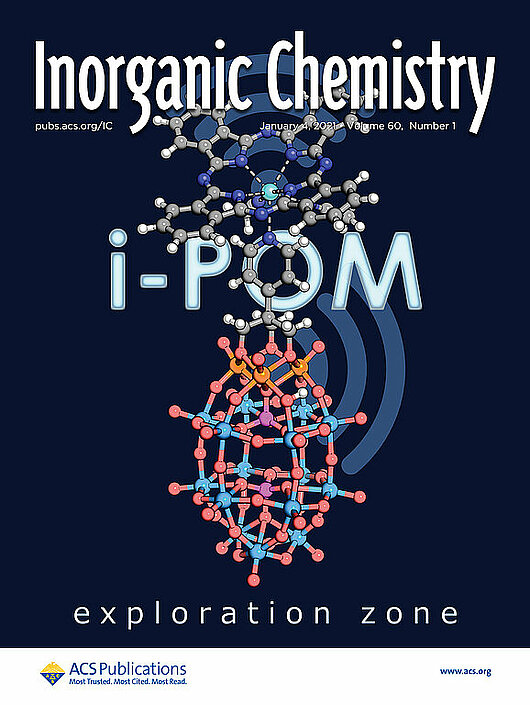The combined understanding of molecule–surface interfaces by spectroscopic, microscopic, spectrometric, electrochemical, magnetochemical and X-ray scattering techniques is at the heart of our highly explorative, interdisciplinary and collaborative materials-oriented research. It is of special value to the chemistry, physics and engineering communities, working in the mainstream areas of molecular electronics and spintronics. The search for high-performance memristive and memcapacitive materials is one of the key tasks of modern information data storage and processing technologies with the far-reaching goal to realize ‘beyond CMOS’ Green-IT computing for the application in artificial intelligence and Digital Health.
In our laboratories we develop novel redox- and spin-active nanoscopic polyoxometalate (POM) compounds and composites using wet-chemical synthesis and study their structure-property-reactivity relationships in solution and on surfaces.
In close cooperation with the “Hertz Electron Beam Laboratory” at IOM we investigate their charge-separated states and charge transfer mechanisms by using photons from an external light source. The scanning tunneling microscope is used as the charge-state readout.
Molecular charge transport properties of single molecules and self-assembled mono- and multilayers on conducting and semi-conducting surfaces are examined in the subgroup “Molecular oxide switching materials”.
Highlights
{P2V3W15}-polyoxometalates functionalized with phthalocyaninato Y and Yb moieties

R. Pütt, P. Kozłowski, I. Werner, J. Griebel, S. Schmitz, J. Warneke, K. Y. Monakhov
Inorg. Chem. 2021, 60, 80–86
https://pubs.acs.org/doi/10.1021/acs.inorgchem.0c02257A tris(alkoxo)pyridine-augmented Wells–Dawson polyoxometalate (nBu4N)6[WD-Py] (WD = P2V3W15O59(OCH2)3C, Py = C5H4N) was functionalized with phthalocyaninato metal moieties (MPc where M = Y or Yb and Pc = C32H16N8) to afford (nBu4N)4[HWD-Py(MPc)] compounds. High-resolution mass spectrometry was used to detect and identify the hybrid assembly. The magnetism studies reveal substantial differences between M = Yb (monomeric, single-ion paramagnetism) and M = Y (containing dimers, radical character). The results of electronic paramagnetic resonance spectroscopy, SQUID magnetometry, and magnetochemical calculations indicate the presence of intramolecular charge transfer from the MPc moiety to the polyoxometalate and of intermolecular charge transfer from the MPc moiety of one molecule to the polyoxometalate unit of another molecule. These compounds with identified VIV ions represent unique examples of transition-metal/lanthanide complex-POM hybrid compounds with nonphotoinduced charge transfer between electron donor and acceptor centers.
Self-assembled monolayers of polyoxovanadates with phthalocyaninato lanthanide moieties on gold surfaces
R. Pütt, X. Qiu, P. Kozłowski, H. Gildenast, O. Linnenberg, S. Zahn, R. C. Chiechi, K. Y. Monakhov
Chem. Commun. 2019, 55, 13554–13557
https://pubs.rsc.org/en/content/articlelanding/2019/cc/c9cc06852j/unauth#!divAbstractThe two first representatives of phthalocyaninato (Pc) lanthanide-ligated polyoxovanadate cages {[V12O32(Cl)](LnPc)n}n−5 (n = 1 or 2, Ln = Yb3+) were synthesised and fully characterised. These magnetic complexes form two-dimensional self-assembled monolayers exhibiting electrical conductivity on gold substrate surfaces, as assessed by using an EGaIn tip.




